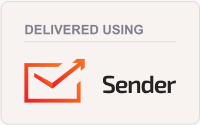In 2017, the Alberta Native Bee Council (ANBC) launched a citizen science bumblebee box monitoring program to better understand bumble bee nesting preferences. Similar to birdhouses, bumble bee boxes may or may not be colonized. Here in Alberta, we've found that about 25% of our boxes are colonized, with higher success in urban areas than rural ones.
If you’re interested in participating, you can build your own bumble bee box by following our assembly instructions here. Don't forget to report back about bee activity and remember that no activity is still important to report! Your participation in this program helps us better understand bumble bee nesting habits.
If you participated in the monitoring program this season and your box was colonized, congratulations! Your bumble bee colony will naturally die off in September. By mid-October (Thanksgiving weekend), you can safely inspect, report, and clean your box. To clean, remove all contents from the box and wipe the interior and exterior with a mild bleach solution. Your reports provide essential data for our research, whether your box was colonized or not!
Want to chat about bee boxes? Join our Discord!
Join us on the Discord app to chat to chime in about your own bee box, ask questions, and see what is working for other people. Use this link to join the Alberta Native Bee Council Discord!
